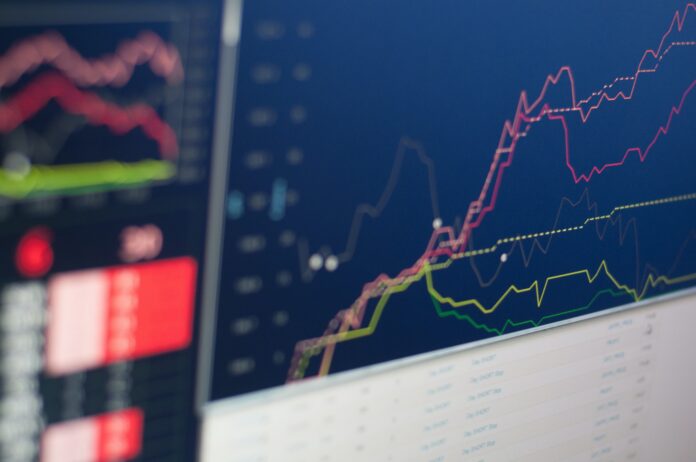The global economy is still experiencing quite a bit of stress, including stresses extending back to the original waves of COVID-19 and new stresses tied to international conflict.
Some of the most important market makers in the world, including the Federal Reserve, are starting to take notice and adjust their policies accordingly. This week, we are taking a close look at how these events are influencing global capital markets and will discuss how these ever-evolving trends might affect the average American investor.
Fed Demonstrates Plan to Increase Interest Rates
The Federal Reserve of the United States—arguably the most powerful financial institution in the world—recently demonstrated an interest in increasing interest rates. The Fed, which is a private institution that is carefully regulated, monitored, and controlled by the Federal Government has a “dual mandate” to create a monetary policy that will both keep inflation levels low while also keeping employment high.
According to Fed Chairman Jerome Powell, “If we think it’s appropriate to raise [interest rates by half a point] at a meeting or meetings, we will do so”, the Wall Street Journal has reported. Since the beginning of the COVID-19 pandemic, interest rates have been near a historic low point. At the same, inflation rates have been relatively high (for a variety of reasons), two simultaneous trends that have inspired some people involved in the Federal Reserve to take action.
Over time, the Federal Reserve hopes to lower the inflation rate to its stated target of about 2 percent. However, in an effort to increase economic stability, the Central Bank typically acts rather slowly, usually only raising interest rates by a fraction of a percent at a time. When interest rates are higher, the cost of borrowing money (for consumers, banks, and other relevant borrowers) will increase. Changing interest rates is one of several tools the Fed uses in order to combat inflation.
DOW Turns Around After Slow Start to Month
The DOW Jones Industrial Average, one of the most useful metrics for gauging the state of the American economy, experienced a roughly one thousand point positive price swing, reaching 34,800 points by the end of the trading day on Monday. This is relatively good news for investors, who had previously witnessed the Industrial Average struggle for the first few weeks of March.
There are likely quite a few reasons the DOW—which is not at the highest point it has ever been but has reached a high point for the month—is beginning to experience a gradual turnaround. One of the most likely is that investors tend to be overly pessimistic when they are greeted with bad news (conflict in East Europe, supply chain challenges, high energy costs, etc.) meaning these events are likely already “baked in” to the broader economy. But additionally, the Federal Reserve’s decision to increase interest rates, thus limiting the amount of money in circulation, has likely clotted at least some of the bleeding that has occurred over the previous two weeks.
Gas Prices Begin to Stabilize—But Have Not Yet Returned to Previous Levels
It’s been a mixture of good and bad news for American drivers: the good news is that gas prices, which experienced a sharp uptick over the past month or so, have finally begun to stabilize. Across the United States, the nation’s average price for gasoline is sitting at about $4.24 per gallon, nearly the highest they’ve been over the past decade. The bad news is, despite this relative level of stabilization, most American households are not ready to take on the sudden financial burden, leading to about 7 in 10 households disapproving about the cost of gas, according to a recent Ipsos poll.
Furthermore, even many of the most optimistic economists expect gas prices to remain high, largely due to a tightened supply chain and typical seasonal changes in demand for the consumption of gasoline (prices almost always increase over the summer months). Uncertainty related to the conflict in Ukraine—Russia is one of the largest oil-producing countries in the world—will also likely cause strain on the wallets of American households.
Increased Sanctions on Russia
The conflict between Russia and Ukraine continues to increase in intensity, with Russia ramping up its bombing campaigns in several of Ukraine’s most important cities, including the very important city of Mariupol. The United Nations’ refugee agency currently estimates that about 3.5 million people, just under 10 percent of the national population are actively trying to flee, with a total of 12 million people (about 30 percent of the Ukrainian population) being directly affected by the war.
The United States and many of its closest allies in the region, including Italy, France, and the United Kingdom, have all announced plans to increase sanctions placed on Russia. Due to Russia’s important role in the global economy, sanctions will likely cause oil, wheat, mineral, and other commodity supply chains to experience additional strain. The United States and its allies have also been talking to China, strongly discouraging the country to limit any assistance to Russia.
We will keep a close eye on the conflict as it continues to unfold.
Andrew is a freelance writer that primarily focuses on real estate and finance topics. He graduated from the University of Colorado with degrees in Finance and Political Science and has since worked in the real estate, life insurance, and digital marketing industries. When he is not writing, Andrew enjoys skiing, playing piano, painting, and spending time with his wife (Maggie) and cat (Crow).



